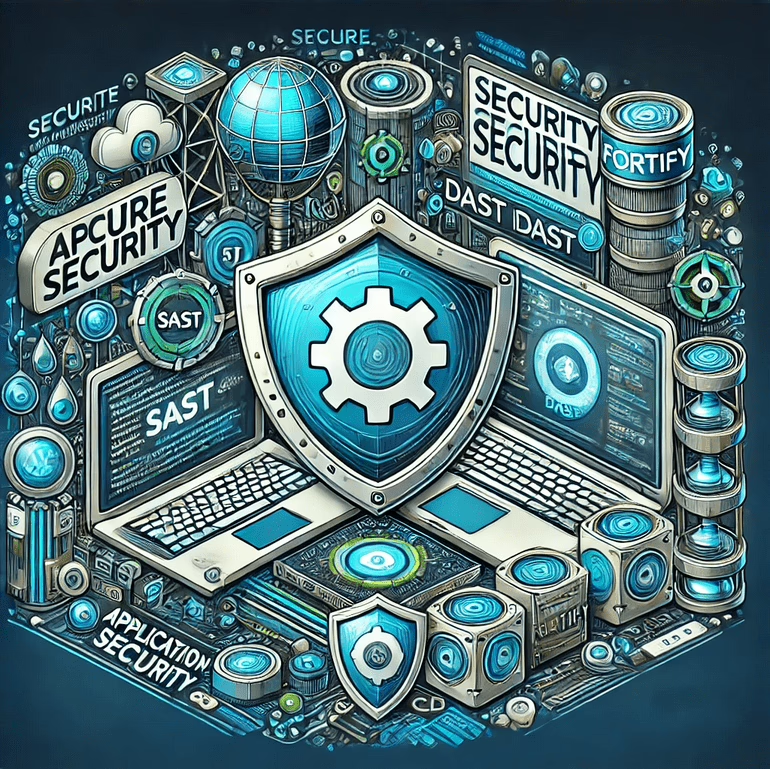In today’s digital landscape, where cyber threats are becoming increasingly sophisticated, ensuring the security of software applications has never been more critical. As organizations continue to adopt and integrate new technologies, the complexity and potential vulnerabilities within their applications grow. This has led to a heightened focus on application security, with businesses striving to protect their software from potential breaches that could result in significant financial and reputational damage.
Fortify, developed by Micro Focus, is a comprehensive suite of application security tools designed to help organizations identify, manage, and mitigate security vulnerabilities throughout the software development lifecycle (SDLC). By incorporating Fortify into their development processes, companies can ensure that security is prioritized from the very beginning, leading to more robust and secure applications.
The Growing Importance of Application Security
As businesses increasingly rely on software to drive their operations, the security of these applications becomes paramount. A single vulnerability can expose sensitive data, disrupt services, and erode customer trust. The consequences of a security breach can be devastating, both financially and in terms of reputation.
Traditional approaches to application security, which often involved manual testing late in the development process, are no longer sufficient. In today’s fast-paced development environments, security needs to be integrated into every stage of the SDLC. This is where Fortify shines, offering a suite of tools that enable continuous security assessment, from the initial coding phase to deployment and beyond.
Introducing Fortify: A Comprehensive Application Security Suite
Fortify provides a wide range of tools and solutions designed to enhance application security across the SDLC. From static code analysis to dynamic testing and real-time monitoring, Fortify covers all aspects of application security, ensuring that vulnerabilities are identified and addressed promptly.
1. Static Application Security Testing (SAST)
One of Fortify’s core features is its Static Application Security Testing (SAST) capabilities. SAST involves scanning the source code and binary code of an application to identify security vulnerabilities and coding errors. This type of testing is performed early in the development process, allowing developers to catch and fix issues before they become embedded in the application.
- Static Analysis: Fortify SAST scans code to detect a wide range of vulnerabilities, including SQL injection, cross-site scripting (XSS), and buffer overflows. These scans provide a comprehensive view of potential security risks within the codebase.
- IDE Integration: Developers can run SAST scans directly from their integrated development environments (IDEs). This integration ensures that security is a natural part of the development process, allowing developers to identify and resolve issues as they code.
- Customizable Rules and Policies: Organizations can define their own coding standards and security policies within Fortify. This customization ensures that the security testing aligns with the organization’s specific needs and regulatory requirements.
2. Dynamic Application Security Testing (DAST)
While SAST focuses on analyzing code at rest, Fortify’s Dynamic Application Security Testing (DAST) tools assess applications in their runtime environments. This type of testing is crucial for identifying vulnerabilities that only become apparent when the application is running.
- Dynamic Analysis: Fortify DAST simulates real-world attacks on the application, identifying vulnerabilities related to insecure authentication, session management, and data exposure. By testing the application in its live environment, DAST provides insights into how the application behaves under attack conditions.
- Scalability and Automation: Fortify DAST tools can be integrated into the CI/CD pipeline, allowing for automated security testing at scale. This integration ensures that security testing is consistent and thorough, regardless of the size or complexity of the application.
3. Interactive Application Security Testing (IAST)
Fortify’s Interactive Application Security Testing (IAST) combines the best of both SAST and DAST, providing real-time security analysis by instrumenting the application at runtime.
- Real-Time Analysis: IAST detects vulnerabilities as they are triggered during testing or actual usage. This approach allows for the identification of complex security issues that might be missed by static or dynamic analysis alone.
- Comprehensive Coverage: By analyzing both the code and its execution, IAST provides comprehensive security coverage, ensuring that vulnerabilities are identified and addressed in real time.
4. Software Composition Analysis (SCA)
Modern software applications often rely on third-party and open-source components, which can introduce additional security risks. Fortify’s Software Composition Analysis (SCA) tools help organizations manage these risks by analyzing the dependencies within an application.
- Dependency Scanning: Fortify SCA scans third-party and open-source components for known vulnerabilities or licensing issues. This analysis helps organizations understand the risks associated with using external libraries and ensures that they are not unknowingly introducing vulnerabilities into their applications.
- Risk Mitigation: By identifying vulnerable components, Fortify SCA enables organizations to take proactive measures to mitigate risks, such as updating to secure versions or replacing problematic libraries.
5. Security Requirements Traceability
Security is not a one-size-fits-all approach. Different applications and industries have different security requirements. Fortify provides the capability to trace security requirements and policies throughout the SDLC.
- Traceability: This feature ensures that security requirements are consistently applied throughout the development process, from initial design to final deployment. By tracing these requirements, organizations can ensure that their applications meet all necessary security standards.
6. Comprehensive Reporting and Remediation
Identifying vulnerabilities is only the first step. Fortify goes beyond detection by providing detailed reports and remediation guidance.
- Detailed Reports: Fortify generates comprehensive reports that detail the vulnerabilities identified, their severity, and the steps needed to fix them. These reports help development and security teams prioritize their efforts and ensure that the most critical issues are addressed first.
- Remediation Guidance: Fortify provides actionable guidance on how to fix identified vulnerabilities. This guidance helps developers address security issues quickly and effectively, reducing the time and effort required to secure the application.
7. Integration with Development Tools
To be effective, security tools need to be integrated seamlessly into the development workflow. Fortify achieves this through its robust integration capabilities.
- CI/CD Integration: Fortify integrates with various CI/CD pipelines, allowing for automated security testing as part of the build and deployment process. This integration ensures that security is continuously assessed throughout the SDLC.
- Issue Tracking Integration: Fortify can also integrate with issue tracking systems, streamlining the process of managing and resolving security vulnerabilities.
8. Support for Multiple Languages and Environments
Fortify supports a wide range of programming languages and development environments, making it suitable for diverse application landscapes. Whether you’re developing in Java, C#, Python, or another language, Fortify has the tools to secure your applications.
- Language Support: Fortify’s extensive language support ensures that security testing can be applied consistently across all parts of an application, regardless of the technologies used.
- Environment Compatibility: Fortify is designed to work in a variety of development environments, from traditional on-premises setups to modern cloud-based architectures.
9. Security Training and Awareness
Security is as much about people as it is about tools. Fortify recognizes this by offering training and resources to help developers and security professionals improve their knowledge of secure coding practices and vulnerability mitigation.
- Training Programs: Micro Focus provides a range of training programs designed to educate developers on secure coding practices and the effective use of Fortify tools.
- Awareness Resources: In addition to formal training, Fortify offers resources to help organizations build a culture of security awareness, ensuring that security is a shared responsibility across the development team.
10. Regulatory Compliance
In today’s regulatory environment, ensuring compliance with application security standards is critical. Fortify helps organizations meet regulatory requirements such as the Payment Card Industry Data Security Standard (PCI DSS) and the Health Insurance Portability and Accountability Act (HIPAA).
- Compliance Support: Fortify’s tools are designed to help organizations achieve and maintain compliance with relevant security regulations, reducing the risk of legal and financial penalties.
- Auditable Reports: The comprehensive reporting provided by Fortify can be used to demonstrate compliance to auditors and regulators, providing peace of mind that your applications meet all necessary security standards.
Why Fortify Matters for Your Business
For businesses, Fortify offers more than just a suite of security tools—it provides a strategic advantage. By integrating Fortify into the SDLC, organizations can:
- Proactively Identify and Mitigate Risks: Fortify’s comprehensive suite of tools allows for the early detection and mitigation of security vulnerabilities, reducing the risk of breaches and their associated costs.
- Enhance Development Efficiency: By automating security testing and integrating it into the development workflow, Fortify helps teams address security issues without disrupting their productivity.
- Ensure Compliance: Fortify’s support for regulatory compliance ensures that your applications meet industry standards, reducing the risk of legal penalties and reputational damage.
Curate Consulting Services: Finding the Right Talent for Fortify Implementation
At Curate Consulting Services, we understand that implementing a comprehensive application security solution like Fortify requires specialized expertise. Whether you’re looking to integrate Fortify into your development processes or need ongoing support to manage and maintain your security posture, we can connect you with the talent you need.
Specialized Talent for Application Security
Finding the right talent is critical to the success of any security initiative. At Curate Consulting Services, we specialize in connecting businesses with professionals who have the skills and experience needed to implement and manage Fortify effectively.
- Security Analysts: Our security analysts are experts in using Fortify’s tools to identify and mitigate vulnerabilities. They work closely with development teams to integrate security into every stage of the SDLC.
- DevOps Engineers: Fortify’s integration with CI/CD pipelines is key to its effectiveness. Our DevOps engineers have the expertise to integrate Fortify seamlessly into your development workflow, ensuring that security testing is automated and continuous.
- Compliance Specialists: Navigating the complex landscape of regulatory compliance can be challenging. Our compliance specialists can help you leverage Fortify’s tools to meet industry standards and avoid legal risks.
Why Choose Curate Consulting Services?
Curate Consulting Services is dedicated to helping businesses succeed by providing access to the highest quality talent. Our commitment to excellence and deep understanding of the technology landscape set us apart as a trusted partner in application security.
- Tailored Solutions: We understand that every organization is unique. That’s why we offer tailored staffing solutions that align with your specific needs and goals.
- Industry Expertise: With decades of experience across various industries, our team has the knowledge and expertise to help you navigate the complexities of application security.
- Commitment to Quality: We are committed to providing the highest quality talent, ensuring that your security initiatives are successful and sustainable.
Conclusion
In an era where cyber threats are constantly evolving, application security must be a top priority for every organization. Fortify offers a comprehensive suite of tools that empower businesses to identify, manage, and mitigate security vulnerabilities throughout the SDLC. By integrating Fortify into your development processes, you can ensure that your applications are secure, compliant, and resilient.

